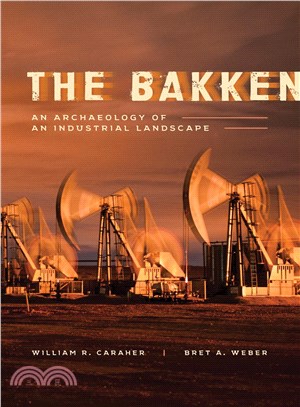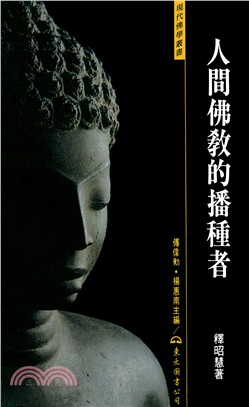相關商品
商品簡介
作者簡介
商品簡介
This book is meant to be several things at once. First, it is a genuine guide to the sights and sites of the Bakken oil patch. Inspired by European travel guides like the Blue Guide and Baedeckers as well as myriad locally authored guides, it gives visitors an opportunity to explore a new place and the related cultural life. Following the tradition of these guides, this volume privileges an archaeological reading of the Bakken landscape and foregrounds the material culture and the industrial picturesque. Reflecting four years of visits to the Bakken, this book presents an encounter with a region informed by conversations with scholars, journalists, longtime residents, temporary workers, and new North Dakotans. While the book primarily focuses on the archaeological and material world, we contend that the archaeological and the material embody the people who made the Bakken’s early-twenty-first-century oil boom an intriguing and dynamic time in the history of both North Dakota and the United States.This guide is also committed to the historical context and significance of the Bakken boom, its monuments, and its people. We intentionally selected the genre of the tourist guide as a way to emphasize the dynamism of the Bakken oil boom against the backdrop of tourism and travel. We did this because the widespread use of fossil fuels, first coal and then petroleum, fostered the emergence of an industrial middle class who then relied upon fossil fuels to travel the world. By the late nineteenth and early twentieth centuries, tourism and recreational travel began to offer a controlled respite from the stability of suburban life through repackaged adventure that celebrated and validated the privilege of the middle-class condition. Today, however, the mobility and instability visible in the Bakken have emerged not as a respite from the routine life of the settled middle-class suburb, but as the daily condition of the working life of a significant segment of the middle class who work “just-in-time,” work in extractive industries, or are otherwise buffeted by the eddying flow of global capital. The twenty-first-century transformation of the middle class positions the venerable tourist guide in a challenging place. On the one hand, the tourist guide locates the worker in the Bakken oil patch and the traveler in the same space within a dynamic landscape. In this way, it is consistent with the classic view of tourism as a method for creating a cohesive modern world understandable to the tourist, even if not entirely familiar.On the other hand, the use of the tourist guide as a way to present the dynamic world of the Bakken has obvious, if superficial, limits. The tourist guide freezes the Bakken in time. A static book cannot represent thoroughly the dynamic character of the changing Bakken landscape. Because of this shortcoming, we have taken the liberty of recording as contemporary various sites observed over multiple trips to the Bakken. This is consistent with our interest in using the tourist guide as a way to document and offer a kind of Geertzian thick description of the landscape and history of the first twenty-first-century Bakken oil boom. The composite landscape presented in this guide includes ephemera that are momentary or will vanish before the end of the decade. Some landmarks in this book will almost certainly be hidden as part of efforts to return the region to a romanticized vision of a preboom state or as different economic priorities continue to reshape the landscape. Our tourist guide draws attention to workforce housing sites, fragile roadside memorials, oil wells destined to be drained and capped, and bustling businesses poised to follow the crowds of workers to the next boom site.There are several themes that run through this tourist guide. We sought to describe the movement of people and resources through-out the oil patch by highlighting infrastructure, ranging from truck stops to pipeline hubs. We set movement in the Bakken against sites of both very recent and more distant historical significance to the industrial past of the region with particular attention to extractive industries. Through the guide, we direct visitors to sites of recent environmental catastrophes and the locations of prominent accidents commemorated by communities and loved ones. Finally, we periodically leaven the guide with some of the individuals we have met throughout our research in the oil patch. We have, as much as possible, avoided direct criticism of the oil industry, communities, or, in most cases, the mass media, but at times a thorough consideration of the Bakken as a living landscape makes this unavoidable.The epilogue provides a framework for reading this book as a piece of scholarship. It addresses the challenge of using archaeological tools to document a contemporary industrial landscape and locates our effort at the intersection of industrial tourism, human landscapes, and oil. We hope that the academic apparatus will allow the reader to appreciate the guide on a different, if not necessarily higher, level as a piece of engaging and useful writing.
作者簡介
William R. Caraher is an associate professor in the Department of History at the University of North Dakota. He specializes in Mediterranean archaeology; Early Christian and Byzantine architecture and settlement in Late Roman Cyprus, Greece; and the contemporary Bakken oil patch of western North Dakota. Since 2003, Caraher has been co-director of the Pyla-Koutsopetria Archaeological Project on Cyprus and the co-principal investigator of the North Dakota Man Camp Project. He is the co-author of Pyla-Koutsopetria I: Archaeological Survey of an Ancient Coastal Town (2014) and co-editor of Punk Archaeology (2014), The Bakken Goes Boom: Oil and the Changing Geographies of Western North Dakota (2016), and the forthcoming Oxford Handbook of Early Christian Archaeology.Bret A. Weber, PhD, LCSW, is an associate professor in the Department of Social Work at the University of North Dakota. His terminal degree is in US History with emphases on 20th Century social policy and environmental history. As a member of the Grand Forks City Council, and as co-director of the North Dakota Man Camp Project (along with service on the boards of the local Housing Authority, Community Action, Fair Housing Center, and various other boards and committees) his work focuses on social justice issues related to housing, and the social, physical, and economic environment. In a previous life, he owned a small chain of pizza shops and other restaurants where he met payroll every two weeks for over twenty-five years.
主題書展
更多
主題書展
更多書展本週66折
您曾經瀏覽過的商品
購物須知
外文書商品之書封,為出版社提供之樣本。實際出貨商品,以出版社所提供之現有版本為主。部份書籍,因出版社供應狀況特殊,匯率將依實際狀況做調整。
無庫存之商品,在您完成訂單程序之後,將以空運的方式為你下單調貨。為了縮短等待的時間,建議您將外文書與其他商品分開下單,以獲得最快的取貨速度,平均調貨時間為1~2個月。
為了保護您的權益,「三民網路書店」提供會員七日商品鑑賞期(收到商品為起始日)。
若要辦理退貨,請在商品鑑賞期內寄回,且商品必須是全新狀態與完整包裝(商品、附件、發票、隨貨贈品等)否則恕不接受退貨。




















![漂鳥集[中英雙語版]](https://cdnec.sanmin.com.tw/product_images/957/957146403.jpg)


